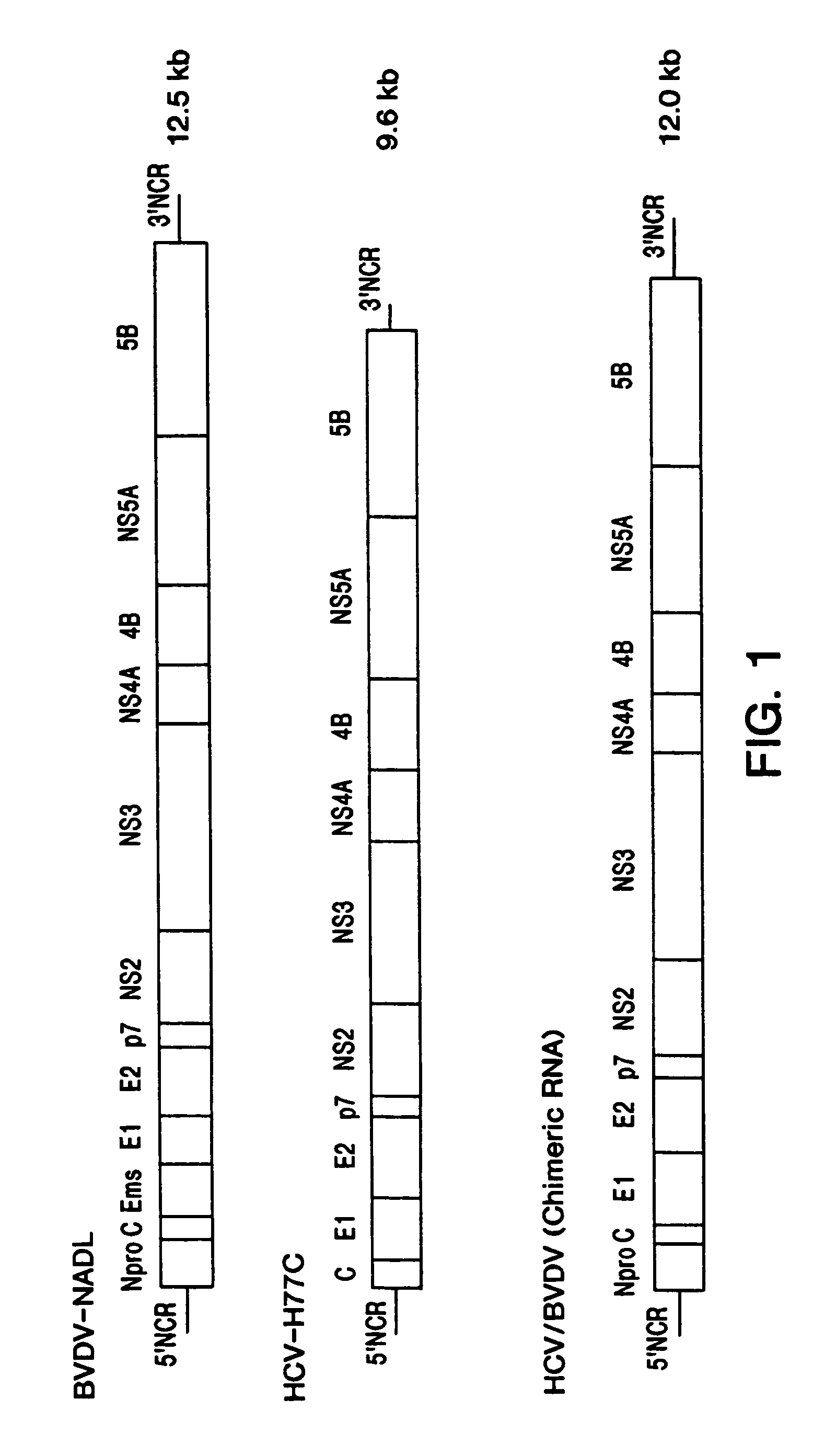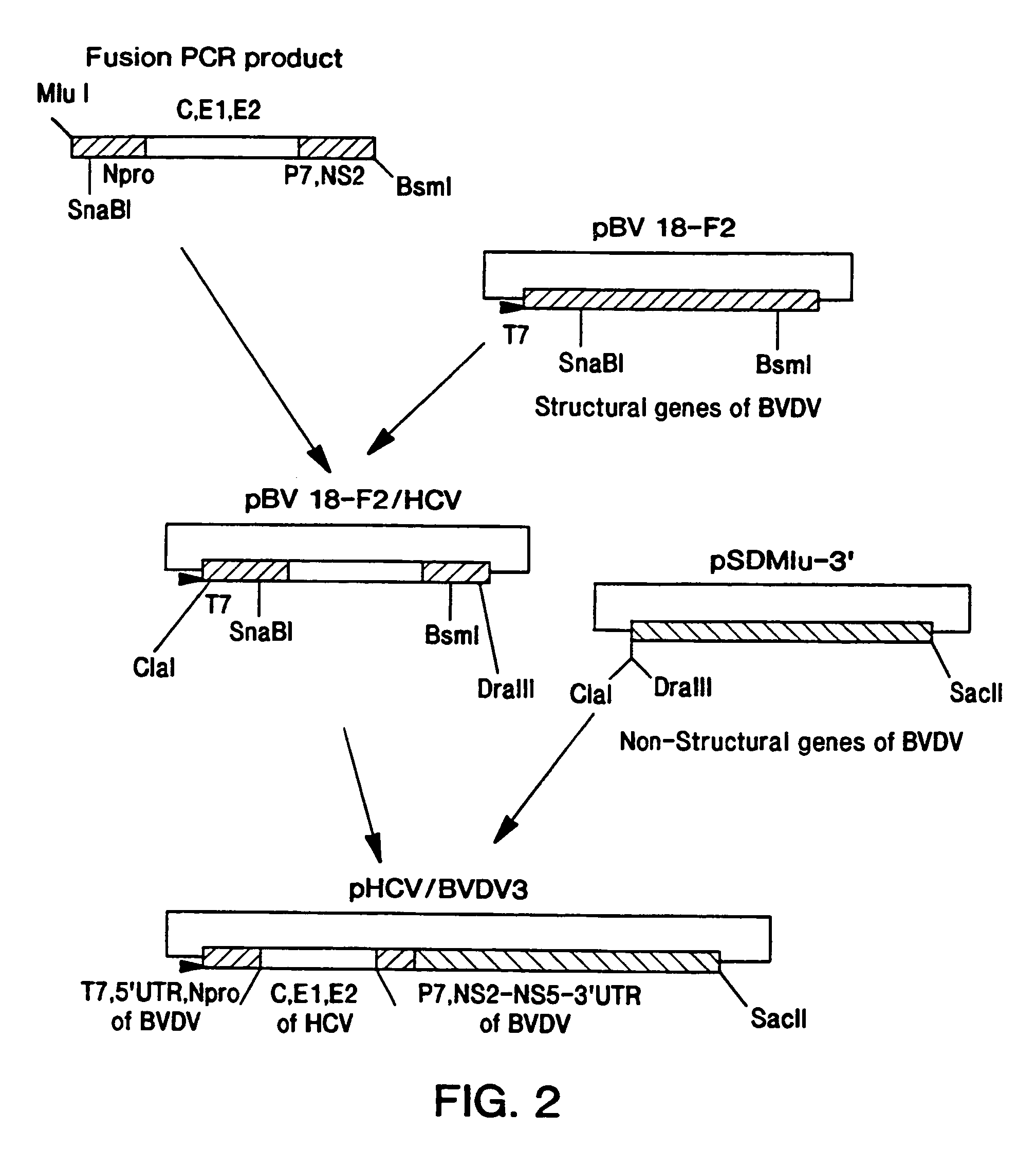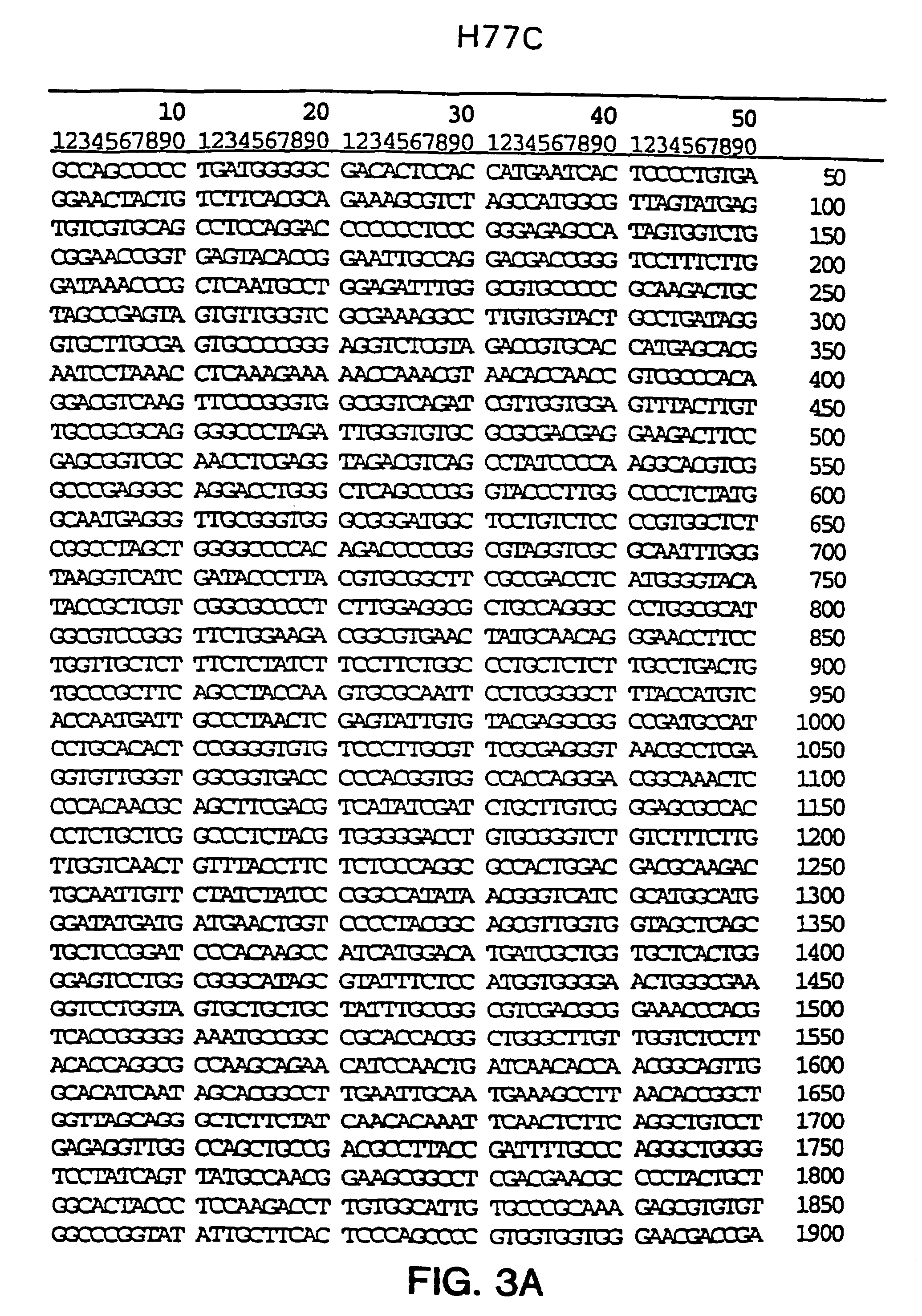HCV/BVDV chimeric genomes and uses thereof
a technology of chimeric genomes and chimeric genomes, which is applied in the field of hcv/bvdv chimeric genomes, can solve the problems of end-stage liver failure, hcv remains a serious public health problem, and the absence of a useful cell culture system, so as to prevent hcv-bvdv
- Summary
- Abstract
- Description
- Claims
- Application Information
AI Technical Summary
Benefits of technology
Problems solved by technology
Method used
Image
Examples
examples
Materials and Methods
Cell Lines
[0046]The different cell lines used in the present study are listed in Table 1. Most cells were grown in Dulbecco's Minimum Essential Medium (DMEM) or DMEM-F12 supplemented with horse serum or with irradiated fetal calf serum. In some cases, Boyt serum, a fetal calf serum free of BVDV and antibodies to BVDV (Boyt Veternary, Neoshoe, Mo.) was used. All cells were incubated at 37° C. in 5% CO2.
[0047]
TABLE 1List of Cell LinesCellOriginMediumEBTr (A)Embryonic bovine trachea10% FBS / MEMBTBovine turbinate10% horse serum / MEMMDBKBovine kidney10% horse serum / MEMEBTr (B)Embryonic bovine trachea10% FBS / MEMHuh 7human hepatoma10% FBS / DMEM F12
Antibodies
[0048]H79: plasma from patient H obtained in the chronic phase two years after the onset of HCV infection (11); CH1530: serum pool from chimpanzee 1530, obtained in the chronic phase one to two years after the onset of HCV infection. Chimpanzee 1530 became infected with HCV following intrahepatic transfection with pCV-...
PUM
| Property | Measurement | Unit |
|---|---|---|
| volume | aaaaa | aaaaa |
| pH | aaaaa | aaaaa |
| density | aaaaa | aaaaa |
Abstract
Description
Claims
Application Information
 Login to View More
Login to View More - R&D
- Intellectual Property
- Life Sciences
- Materials
- Tech Scout
- Unparalleled Data Quality
- Higher Quality Content
- 60% Fewer Hallucinations
Browse by: Latest US Patents, China's latest patents, Technical Efficacy Thesaurus, Application Domain, Technology Topic, Popular Technical Reports.
© 2025 PatSnap. All rights reserved.Legal|Privacy policy|Modern Slavery Act Transparency Statement|Sitemap|About US| Contact US: help@patsnap.com



